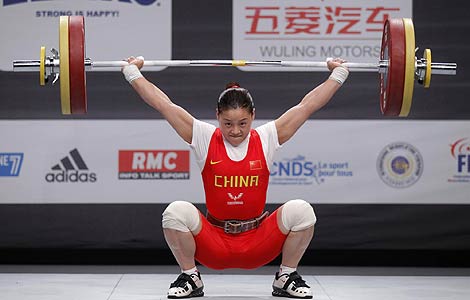China's innovative surge is genuine
Updated: 2011-11-10 10:46
By Chen Weihua (China Daily)
|
|||||||||
NEW YORK - When author Rebecca Fannin talked three years ago about her book Silicon Dragon: How China Is Winning the Tech Race, she received some push back from her United States audience.
But when her new book Startup Asia: Top Strategies for Cashing in on Asia's Innovation Boom, recently hit newsstands, she said she no longer feels the resistance. The mood in the air is totally different.
China's innovation is not only a central theme of the nation's 12th Five-Year Plan (2011-2015), but also a hot topic in the US. In New York, there has been at least one major conference on Chinese innovation each month so far this year. Books and reports on Chinese innovation make frequent headlines.
For Fannin, who has talked to many entrepreneurs and visited many high-tech parks in China, the energy level for innovation in China is now higher than the Silicon Valley in the US. "It's like the Silicon Valley in the dotcom boom. The entrepreneurs and venture capitalists are very optimistic about China becoming an innovation society. China is now moving up the ladder from 'made in China' to 'innovation in China,'" Fannin told China Daily.
John Kao, who was dubbed "Mr. Creativity" by The Economist and is now chairman of the San Francisco-based Institute for Large Scale Innovation, said he shares Fannin's sentiments after travelling to China as a member of a US expert panel on Chinese innovation, where he toured science parks, venture incubators, multinational labs and startups in life sciences and digital media.
"What has emerged is a rather startling picture of a country on the move, whose drumbeat is innovation," said Kao, author of Innovation Nation, which has been translated into Chinese.
Besides the government's five-year plan that paints an ambitious picture of making innovation the driving force for the nation, other facts often cited also describe a country that is fast on its way to brilliant innovations: China now accounts for 12.5 percent of the global R&D spending, second only to the US; China has more graduates in engineering than the US; there are more than 1,400 R&D centers set up by foreign multinationals in China; China is quickly becoming one of the largest patent-filing nations in the world. China's ZTE and Huawei, two telecom equipment manufacturers, were among the top four patent filers in the world last year.
Haiyan Wang, managing partner of the Maryland-based consultancy China India Institute, said overall she is optimistic about China becoming an innovative society in the next two or three decades.
She believes several driving forces will propel China up the innovation ladder.
Wang said China's push for more innovation is out of its own necessity, especially with a shortage of resources, a deteriorating environment, aging population and rapid urbanization. All these are propelling China toward creating innovative products, solutions and business models.
Wang also cited China's abundance of low-cost talent as another driving force, as well as a strong government push and the spillover effect from multinationals investing in China as major factors.
The National Bureau of Statistics said in a report a month ago that China's spending on R&D jumped 21.7 percent year-on-year in 2010. The $111 billion R&D expenditure accounted for 1.76 percent of China's gross domestic product. The proportion will be raised to 2.5 percent by 2020.
But Wang pointed to major challenges on China's path to innovation over the next few decades. She is primarily concerned about China's next generation of innovators and whether students will still grow under a rote learning system.
While Wang believes the massive government investment in R&D is a good thing, she cautioned about the waste and inefficiency involved, citing the fact that China's 12.5 percent of global R&D spending only produced 1 percent of the total patent granted by leading patent offices outside China.
While Wang still describes China as very much a dwarf on the technology front compared with the US, John Kao, who advises nations and regions on innovation strategy and execution, said China is neither a 20-foot giant nor a paper tiger as some have described. "China's innovation drive is going to be very influential," he said.
Kao said China won't find an exact model to copy in becoming an innovative society. "China needs to be very selective of where to learn from," said Kao, adding that he sees the Chinese government's strong involvement as a sign of strength.
Kao believes that while competition will always exist between the US and China, there have already been a lot of cooperation between the two countries, such as the fact that many Silicon Valley companies have both business strategies in both China and the US.
"There are a lot of areas China and the US can pursue together. There is much to be gained from working together," he said.
Fannin said the entrepreneurs she talked to agreed on the positive role played by the Chinese government.
"I don't know what paper tiger is. I call it Silicon Dragon. I think what we are seeing is a Silicon Valley developing quite quickly in China over the past decade," Fannin said.
China Daily











